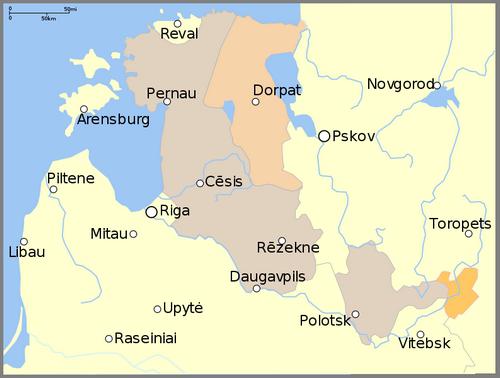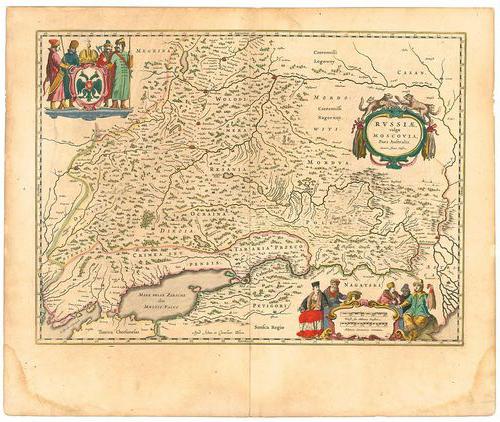In 1618, on December 1 (11), after an unsuccessful outcome of an attempt by the Poles to take Moscow, an agreement was concluded between Russia and the Commonwealth in the village of Deulino. This peace treaty established a non-war period of 14.5 years. The agreement went down in history as the "Deulinskoy truce".
Start of war

Officially, the beginning of the Russian-Polish war is considered to be 1609. The first years of the military company were extremely successful for the Polish-Lithuanian troops. In the period from 1609 to 1612 they conquered and established their power in a large territory of the western part of Russia. The largest at that time fortress Smolensk also entered this area. The situation of Russia in those years was extremely unstable. After Vasily Shuisky was overthrown, an interim government came to power, consisting of authoritative representatives of the boyar clans. On their behalf, in August 1610, an agreement was signed on the erection of the Polish prince Vladislav Vazy to the Russian throne and the introduction of the Polish garrison into Moscow. However, these plans were not destined to come true. In 1611-1612, a militia was created in Moscow, acting with sharply anti-Polish views. These forces manage to first push the Polish-Lithuanian troops out of the territory of the Moscow Region, and later, in 1613-1614, from a number of large cities of Russia.
Second attempt
In 1616, Vladislav Vaza united with the Lithuanian hetman Jan Khodkevich and again made an attempt to occupy the Russian throne. It should be said that at that time it already belonged to Tsar Mikhail Fedorovich Romanov. The soldiers of the combined army were lucky: they managed to free Smolensk besieged by Russian troops and advance deep into the country right up to Mozhaisk. Having received reinforcements from the Ukrainian Cossacks in 1618 under the leadership of Hetman Petro Sagaidachny, the army of the Commonwealth reached Moscow. After an unsuccessful assault on the Russian capital, the Polish-Lithuanian army retreats to the area of the Trinity-Sergius Monastery. Petr Sagaidachny with his people leaves for the Kaluga region. Under the current conditions, Russia, which had just survived the Time of Troubles and the war on two fronts, was forced to sign a peace treaty on obviously unfavorable conditions.
The first stage of concluding a contract
The starting point of the negotiations is the Presnya River. They took place in 1618, October 21 (31). The first meeting did not bring any special results. The parties made maximum demands on each other. So, the representatives of Vladislav Vaz insisted that he be recognized as the only legitimate Russian tsar and demanded that the Pskov, Novgorod and Tver lands be transferred under his leadership. The Russians, in turn, insisted on the immediate return of all areas and the withdrawal of enemy troops from Russian territory. The second meeting, which took place on October 23 (November 2), 1618, was more successful. The Russian side demanded the establishment of a twenty-year truce, agreeing in return to cede Roslavl and Smolensk. The Polish side refused the claims of Vladislav Vaza on the Russian throne, but demanded that the Pskov lands be given away. Representatives of the Commonwealth also insisted on the return of all previously conquered Lithuanian regions and the full reimbursement of expenses incurred during the war.

Second phase
After the Polish-Lithuanian army moved to the area of the Trinity-Sergius Monastery, negotiations continued there. At the same time, it played against both parties to the military conflict. The Polish-Lithuanian army experienced enormous difficulties in the supply of food, the onset of cold brought ever greater trouble. Constant interruptions in funding fueled the general discontent of the mercenaries, among whom there were already thoughts to leave the army. In this situation, requisitions and robberies of the local population by Polish-Lithuanian soldiers flourished, Cossacks were especially distinguished in this. The protracted war had an extremely negative effect on the mood of the inhabitants of Moscow, some of which were for the Polish tsar. The people are tired of the Troubles and wars. As a result of negotiations, the main armistice points were agreed. Disagreements arose over the list of cities under the control of the Commonwealth. Also, the parties could not reach agreement on the terms of the armistice and the title powers of Mikhail Romanov and Vladislav Vazy. On November 20 (30), 1618, representatives of the Russian embassy arrived under the walls of the monastery. The result of three days of negotiations was the signing of the "Deulinskoy truce." Under pressure from the Polish-Lithuanian government, the Russian side had to abandon a number of its demands and make concessions.

Basic conditions
The "Deulinskaya truce" with the Polish-Lithuanian Commonwealth was established for a period of 14 years and 6 months, namely from December 25, 1619 to June 25, 1633. At the disposal of the Commonwealth passed: Smolensk, Roslavl, Dorogobuzh, Belaya, Serpeysk, Novgorod-Seversky, Trubchevsk, Chernihiv, Monastery, including the surrounding land. The following cities returned to Russia: Vyazma, Kozelsk, Meshchovsk, Mosalsk instead of such cities as Starodub, Pochep, Nevel, Krasnoye, Sebezh, Popova Gora, including the surrounding lands. The "Deulinskoy truce" with Poland provided for the transfer of the cities indicated in it with its environs until 1619, February 15 (25). Together with cities and lands, residents and property located on it were transferred. Until that date (1619, February 15 (25)), all Polish-Lithuanian and Ukrainian troops had to leave the territory of Russia. Also, the "Deulinskaya truce" provided for the exchange of prisoners of war. He was assigned to February 15 (25), 1619. The "Deulinskiy truce" provided for the return to Russia only for merchants, nobles and the clergy. Under the terms of the ceasefire agreement, the Russian tsar no longer owned the titles of the Livonian, Smolensk and Chernigov rulers. The icon of St. Nicholas, captured in Mozhaisk by the Polish-Lithuanian forces, was transferred to Russia. By the terms of the agreement, boundary land surveying was set for the summer of 1619. The "Deulinskiy truce" gave the right to free movement on the territory of the signatory countries to Russian and Polish-Lithuanian merchants. The exceptions were the cities of Krakow, Vilno and Moscow. Władysław Waza defended the right to be called the Russian Tsar in official documents of the Polish-Lithuanian state.

Historical meaning
The Deulin ceasefire of 1618 is the largest military and political success of the Commonwealth in the confrontation with Russia. The borders of the Polish-Lithuanian state moved far east. In the period from 1616 to 1622, the territory of the Commonwealth reached its historic maximum (990 thousand km²). The Deulinskiy truce officially secured the claim to the Russian throne by the Polish king and the Lithuanian prince. For Russia, the signing of an armistice agreement, at first glance, seemed extremely unprofitable. However, it was precisely thanks to the cessation of the war with the Polish-Lithuanian army that the necessary calm after the Time of Troubles came in the country. A few years later, having gathered strength, Russia violated the terms of the armistice, starting the Smolensk war. The result of it was a complete refusal of Vladislav from claims to the throne. Russia was able to finally restore its territorial losses only during the Russo-Polish war of 1654–1667.